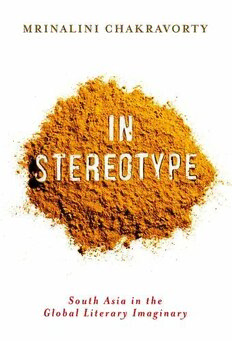
In stereotype : South Asia in the global literary imaginary PDF
Preview In stereotype : South Asia in the global literary imaginary
IN STEREOTYPE Literature Now LITERATURE NOW Matthew Hart, David James, and Rebecca L. Walkowitz, Series Editors Literature Now offers a distinct vision of late twentieth- and early twenty- first-century literary culture. Addressing contemporary literature and the ways we understand its meaning, the series includes books that are com- parative and transnational in scope as well as those that focus on national and regional literary cultures. Caren Irr, Toward the Geopolitical Novel: U.S. Fiction in the Twenty- First Century Heather Houser, Ecosickness in Contemporary U.S. Fiction: Environ- ment and Affect I N S T E R E O T Y P E South Asia in the Global Literary Imaginary Mrinalini Chakravorty Columbia University Press New York Material in chapter 4 previously appeared in “The Dead That Haunt Anil’s Ghost: Subaltern Difference and Postcolonial Melancholia” PMLA 128, no. 3 (May 2013): 542–58. Material in chapter 5 appeared in a previous form as “Brick Lane Blockades: The Bioculturalism of Migrant Domesticity,” MFS: Modern Fiction Studies 50, no. 3 (2012): 503–28. Columbia University Press Publishers Since 1893 New York Chichester, West Sussex cup.columbia.edu Copyright © 2014 Columbia University Press All rights reserved Library of Congress Cataloging-in-Publication Data Chakravorty, Mrinalini. In stereotype : South Asia in the global literary imaginary / Mrinalini Chakravorty. pages cm Includes bibliographical references and index. isbn 978-0-231-16596-9 (cloth : alk. paper) — isbn 978-0-231-53776-6 (electronic) 1. South Asian literature—20th century—History and criticism. 2. South Asian literature—21st century—History and criticism. 3. Stereotypes (Social psychology) in literature. I. Title. PK5416.C43 2014 891.4—dc23 2013040700 Columbia University Press books are printed on permanent and durable acid-free paper. This book is printed on paper with recycled content. Printed in the United States of America c 10 9 8 7 6 5 4 3 2 1 Jacket design by Noah Arlow References to websites (URLs) were accurate at the time of writing. Neither the author nor Columbia University Press is responsible for URLs that may have expired or changed since the manuscript was prepared. For Lindon Warren Barrett CONTENTS Acknowledgments ix Prologue: Stereotypes as Provocation 1 1. Why the Stereotype? Why South Asia? 11 2. To Understand Me, You’ll Have to Swallow a World: Margins, Multitudes, and the Nation in Salman Rushdie’s Midnight’s Children 50 3. Slumdog or White Tiger? The Abjection and Allure of Slums 85 4. The Dead That Haunt Anil’s Ghost: Subaltern Stereotypes and Postcolonial Melancholia 119 5. From Bangladesh to Brick Lane: The Biocultural Stereotypes of Migrancy 151 6. Good and Bad Transnationalisms?: Outsourcing and Terror 187 Epilogue: The Afterlife of Stereotypes 221 Notes 233 Bibliography 285 Index 305 ACKNOWLEDGMENTS A book begins long before it takes the shape of one, sometimes in frag- ments and in conversations that only later seep into its pages. The ideas in this book first germinated in the many rich conversations I had with a fabulous cohort of mentors, colleagues, and friends at the University of California, Irvine. As far as these things are knowable, the initial inspiration for the proj- ect came from David Lloyd’s seminar “Modernity and the Irish Body,” which to this day serves as my model for how to read meticulously while challenging the assumptions of texts even when succumbing to their pleasures. Irish colonial modernity, of course, was shot through with colonialist stereotypes of Irish otherness. Yet the fantastic recalcitrance of the Irish in appropriating and redeploying these stereotypes toward insurgent, countercolonial practices is a lesson that David taught so very well and one that endured with me. I feel deeply fortunate to have been inspired by David’s example, and for finding such a brilliant and gener- ous interlocutor who spurred my early interests in cultural stereotypes and compelled me to run with it in my own way. I am also grateful for the steadfast encouragement provided by Gabri- ele Schwab and J. Hillis Miller. My work has benefited immensely from their truly unorthodox and intellectually lively engagement. Gaby has been a friend and confidante without parallel; from her I have learned that scholarly curiosity should be motivational, ethically directed, and
